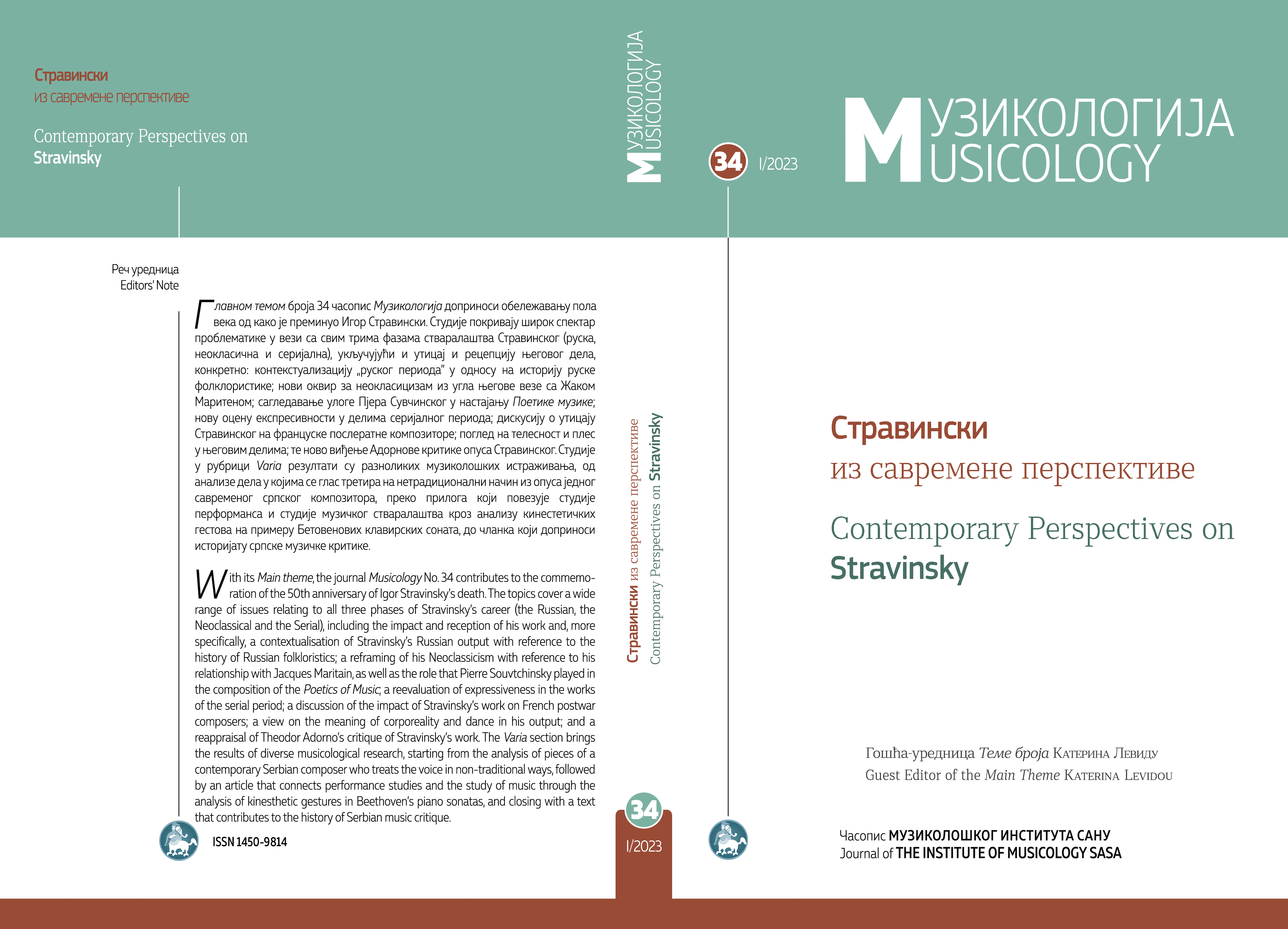Performative gestures in Beethoven’s piano sonatas
Keywords:
performative gesture, body movement, Beethoven’s piano sonatas, piano technique, piano performanceAbstract
The purpose of this study is to contribute to the discussion of how the character of physical body movements conveys expression and affects the creation of a musical work. The primary focus of this phenomenological study is on kinesthetic gestures or body movements which pianists use in their performances in order to create the musical-poetic content in a corporeal performing form. The main discussion is concentrated on the analysis of movements that emanate from the characteristics of the piano technique, particularly of technical elements in the piano sonatas by Ludwig van Beethoven.
References
Bremmer, Jan, and Herman Roodenburg, eds. 1991. A Cultural History of Gesture: From Antiquity to the Present Day. New York: Cornell University Press.
Cytowic, Richard E. 2002. Synesthesia: A Union of the Senses. Cambridge, Massachusetts: MIT Press.
Davidson, Jane W., and Jorge Salgado Correia. 2002. “Body Movement”. In The Science and Psychology of Music Performance: Creative Strategies for Teaching and Learning, edited by Richard Parncutt and Gary E. McPherson, 237–250. New York: Oxford University Press.
Dinov Vasić, Marija. 2019. Studies of Performing Arts: Performativity and the Function of the Body Gesture in Pianism [Studije izvođačkih umetnosti: performativnost i funkcija telesnog gesta u pijanizmu]. PhD diss., University of Arts in Belgrade. https://eteze.arts.bg.ac.rs/handle/123456789/407.
Dinov Vasić, Marija. 2021. “Studije izvođačkih umetnosti u muzici”. In Savremeno i tradicionalno u muzičkom stvaralaštvu 2, edited by Miradet Zulić, 43–52. Sarajevo: Univerzitet u Istočnom Sarajevu, Muzička akademija.
Doğantan-Dack, Mine. 2011. “In the Beginning was Gesture: Piano Touch and the Phenomenology of the Performing Body”. In New Perspectives on Music and Gesture, edited by Anthony Gritten and Elaine King, 243–265. Farnham/Burlington: Ashgate Publishing Limited.
Drake, Kenneth. 2000. The Beethoven Sonatas and the Creative Experience. Bloomington, Indianapolis: Indiana University Press.
Foster, Susan Leigh. 2011. Choreographing Empathy: Kinesthesia in Performance. London and New York: Routledge.
Hatten, Robert S. 2004. Interpreting Musical Gestures, Topics, and Tropes: Mozart, Beethoven, Schubert. Bloomington and Indianapolis: Indiana University Press.
Hatten, Robert S. 1994. Musical Meaning in Beethoven: Markedness, Correlation, and Interpretation. Bloomington: Indiana University Press.
Helloitismetomato. 2020. “AndráS Schiff - Sonata No.1 in F Minor, Op.2/1 - Beethoven Lecture-Recitals”. May 11, 2020. YouTube video, 40:14, https://youtu.be/d4ZWPJlNSXM. (accessed 21 January 2023).
Jensenius, Alexander Refsum. 2007. Action - Sound: Developing methods and tools for the study of body movement in relation to music. Oslo: University of Oslo.
Levinson, Jerrold. 1993. “Performative vs Critical Interpretation in Music”. In The Interpretation of Music, edited by Michael Krausz, 33–60. Oxford: Clarendon Press.
Schenker, Heinrich. 2000. The Art of Performance. Translated by I. S. Scott. New York/Oxford: Oxford University Press.
Schmidt-Jones, Catherine. 2007. Understanding Basic Music Theory. Rice University, Houston, Texas: Connexions.
Tarasti, Eero. 1997. “The Emancipation of the Sign: On the Corporeal and Gestural Meanings in Music”. Applied Semiotics/Sémiotique appliguée 2 (4): 15–26.
Tarkovsky, Andrei. 1989. Sculpting in Time: Reflections on the Cinema. Translated by K. Hunter-Blair. Texas: University of Texas Press.
Downloads
Published
Issue
Section
License
Copyright (c) 2023 MUZIKOLOGIJA-MUSICOLOGY

This work is licensed under a Creative Commons Attribution-NonCommercial-NoDerivatives 3.0 Unported License.
You are free to:
- Share — copy and redistribute the material in any medium or format.
The licensor cannot revoke these freedoms as long as you follow the license terms.
Under the following terms:
-
Ауторство — You must give appropriate credit, provide a link to the license, and indicate if changes were made.
You may do so in any reasonable manner, but not in any way that suggests the licensor endorses you or your use. -
Некомерцијално — You may not use the material for commercial purposes.
-
NoDerivatives — If you remix, transform, or build upon the material, you may not distribute the modified material.
- No additional restrictions — You may not apply legal terms or technological measures that legally restrict others from doing anything the license permits.



